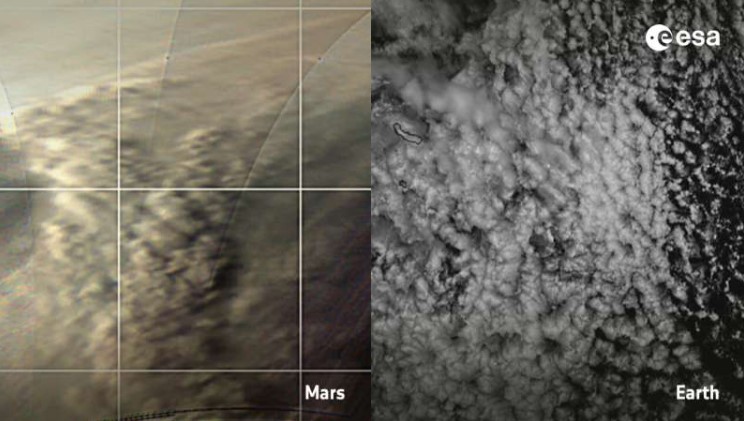It was discovered by the Mars Express spacecraft of the European Space Agency, ESA Mars They produce strikingly Earth-like cloud patterns, particularly those found in our planet’s tropics, according to a new study looking into dust storms that have occurred near Mars’ north pole.
However, according to Phys, Earth and Mars have very different atmospheres: Mars’ dry, cold atmosphere is composed almost entirely of carbon dioxide, while Earth’s atmosphere is rich in nitrogen and oxygen.
The density of its atmosphere is less than one fiftieth that of Earth, which corresponds to the density found at an altitude of about 35 km above the Earth’s surface.
While they differ markedly, their cloud patterns have been found to resemble those of Earth, indicating similar formation processes.
The storms were observed during the Arctic spring, when local storms usually form around the ice sheet.
Cameras aboard Mars Express, the Visual Monitoring Camera (VMC) and High-Resolution Stereo Camera (HRSC), along with the MARCI camera aboard NASA’s Mars Reconnaissance Orbiter, captured the storms from orbit.
The sequence of VMC images shows that the storms appear to wax and wane in cycles over the course of days, displaying common features and shapes.
The spirals are clearly visible in the wider views of the HRSC images. The spirals have a length of 1,000 to 2,000 km and their origin is the same as that of extratropical cyclones observed in the middle and polar latitudes of the Earth.
They showed that Martian dust storms are made up of small, regularly spaced cloud cells arranged like grains or pebbles, and that this structure is also seen in clouds in Earth’s atmosphere.


